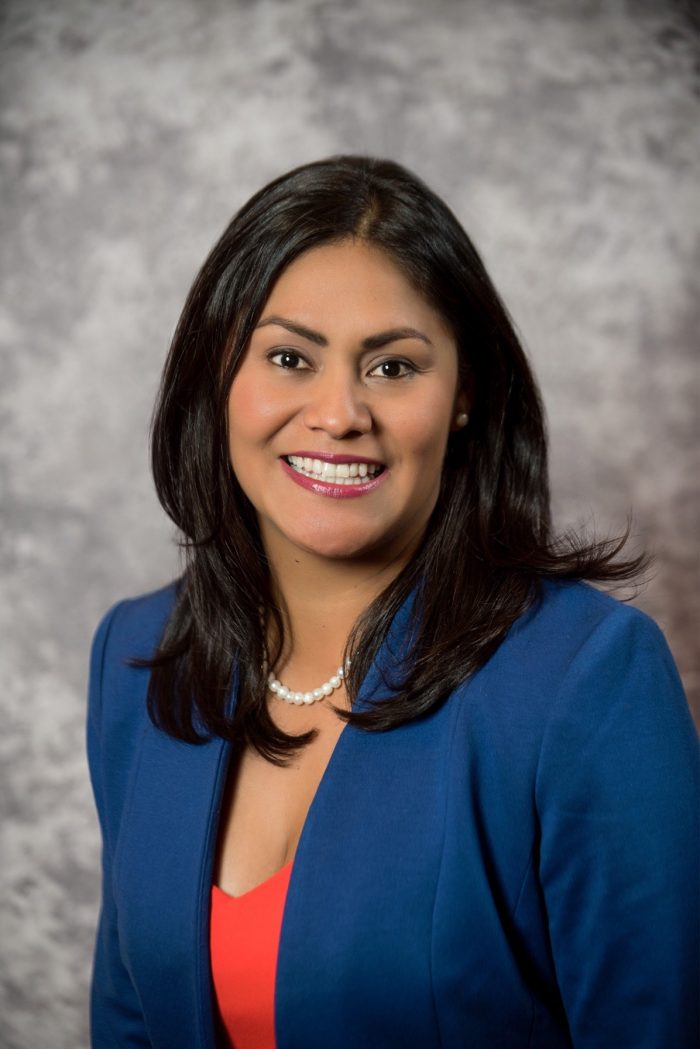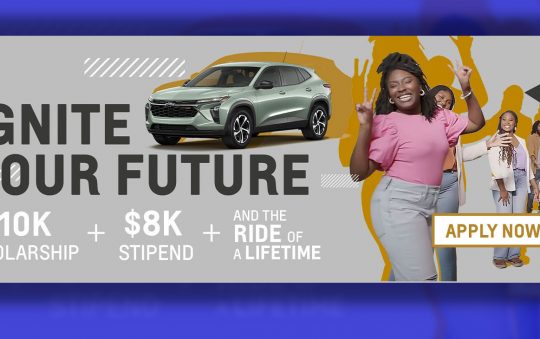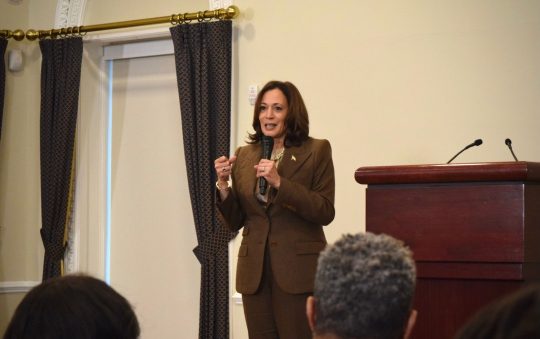
The capacity of petroleum to power transportation and manufacturing has proven a game changer that marked America’s first Generation Energy, according to American Petroleum Institute (API) President and CEO Mike Sommers.
Today’s energy is made up of innovators, problem solvers and disruptors – in the sense that American energy is changing the country’s narrative and altering its trajectory in historic terms, Sommers said.
That America’s Generation Energy supplies the foundation for modern life – it provides the fuel, power and products which make everyday life safer, healthier, and more comfortable –probably could not have been summed up better than by what Frank M. Stewart said.
“The energy workforce opportunity could lead to an economic emancipation for many in our community,” said Stewart, a consultant for API and president of Frank M. Stewart & Company.
Elia Quintana, the director of Stakeholder Relations for API , Dr. Carlos Rodriguez, and Stewart joined the National Newspaper Publishers Association’s (NNPA) Midwinter Training Conference in Orlando, Fla., in January
It’s Quintana’s department that will lead API’s Energy Research Collaborative (ERC) with strategic partners focused on workforce development and engagement with nontraditional allies.
With alliances with NNPA, – the Black Press of America with more than 215 African American owned newspapers and media companies – and the National Association of Hispanic Publications, the American Association of Blacks in Energy and others, API hopes to encourage minorities and women to be petroleum engineers, geologists, welders, electricians, accountants, business managers and fill other necessary posts.
The ERC also includes Asian Americans in Energy, the Environment and Commerce, the Congressional Black Caucus Foundation, the Congressional Hispanic Caucus Institute, Hispanics in Energy, National Center for American Indian Enterprise Development, The Society for Hispanic Professional Engineers, United States Hispanic Chamber of Commerce and others.
The group meets regularly and continues to provide feedback and recommendations to API.
“The Black Press, probably more than any organization in the nation has a history of communications with the Black community, reaching policy leaders in the community as well as young folks,” Stewart said.
“We believe we have a unique opportunity and the way to reach the community is by [aligning] with the people they trust,” he said.
Rodriguez said the same can be said about America’s Hispanic community.
“The analogy is also with the Hispanic Press,” he said.
“We have a big presence in cities where we have Latino and Black press and from an API perspective, we want to figure out how we leverage that power,” Rodriguez said.
API counts as the only national trade association representing all facets of the natural gas and oil industry in support of 10.3 million U.S. jobs and nearly 8 percent of the American economy.
With at least 40 percent of the industry’s worker base on track to retire by 2035, ERC’s research has shown that a vast number of those positions will be filled by women and minorities over the next decade and beyond.
“API is specifically prioritizing on ensuring that the future workforce of tomorrow is being able to impact a diverse community,” Quintana said.
“The oil and gas industry represents 10 percent of the workforce and within that we have 50 percent of the current workforce who will be retiring so we’re making sure to create allies and strategies so that we can fill those jobs,” she said.
Quintana, Stewart and Rodriguez agreed that the talents of all are needed to fill jobs –many of which carry a near six-figure income to start.
Particularly through the ERC, API is working with its partners to increase the awareness of the industry in underrepresented communities.
The company has noted that there’s an industry-wide recognition of how imperative it is to equip more students for those jobs – especially African Americans, Hispanics and women –all of whom historically have been underrepresented in the natural gas and oil business.
“The issue of awareness has to translate into an action issue for penetration into communities of color,” Rodriguez said. “We will study to see if the numbers that we have still hold and how it’s distributed among people of color and what are the implications.”
The industry supports 10.3 million jobs, according to a recent study.
Additionally, an IHS Market Study estimates that a total of 1.9 million direct job opportunities – STEM-related and those of other skill sets – through 2035.
The study projects that Hispanic workers will hold 576,000 of those jobs while African Americans account for 131,000.
Women are projected to fill nearly 300,000 jobs in the industry through 2035.
“What is the nature of those jobs? Are we only talking about PhD’s? No, we’re looking incredibly wide range from high school training to post doctorate training,” Stewart said.
“We’re looking at Houston, Pennsylvania, Eastern Ohio and other areas where our communities are within reach of these opportunities.”
Said Rodriguez: “You get a high school degree, stay drug free and get a certification, you can start making $85,000 or $90,000. It’s incredible.”







